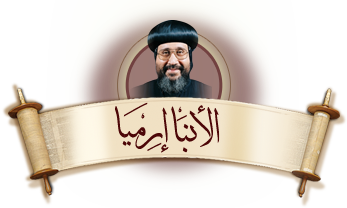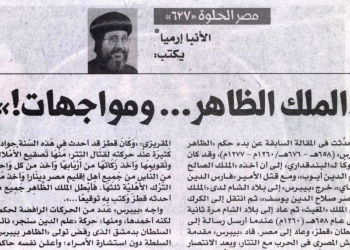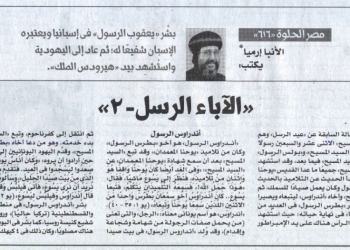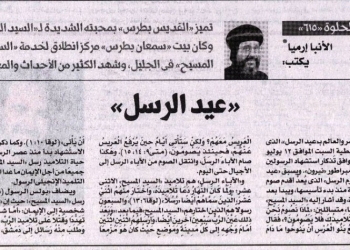In the previous article, we talked about the second term of Muhammad ibn Tughj al-Ikhshid in Egypt, the resistance of Ahmad ibn Kayghalagh’s supporters against him and the wars that ended with the defeat of the followers of ibn Kaighalagh who then rushed to the Fatimids to encourage them to invade Egypt. We referred to the attempt of ibn Ra’iq to attack Egypt and to the many wars that ended with a reconciliation agreement between the two sides, where ibn Ra’iq returned to the Levant while al-Ikhshid went back to Egypt. It was not long before the news of the death of Caliph ar-Radi came to al-Ikhshid in 329 AH (940 AD). Then his brother, Al-Muttaqi bi-llah took over the affairs of the government, acknowledged the Ikhshidid rule over Egypt and remained in charge of its affairs.
In 330 AH (941 AD), Ibn Ra’iq was killed in the Levant. Then al-Ikhshid left his brother al-Muzaffar to run the affairs of Egypt as his deputy, headed up his army, seized Damascus, staying there for a year until everything was settled, and then returned to Egypt. In 332 AH (944 AD), al-Ikhshid knew about the departure of Caliph al-Muttaqi to the Levant, so he went out to meet him in al-Raqqa, presented him with antiques and gifts and offered him his help to get rid of Tuzune the amir al-umara (commander) but the caliph did not accept, and al-Ikhshid came back to Egypt in 333 AH (945 AD). After a while, Caliph al-Muttaqi was deposed, and al-Mustakfi took over.
At the end of the year, disputes and disagreements erupted between al-Ikhshid and Sayf al-Dawla ibn Hamdan over the Levant, but they finally agreed that Sayf al-Dawla would rule Aleppo, Antioch and Homs while al-Ikhshid rules the rest of the Levant. After a while disputes erupted again, al-Ikhshid headed up his army to fight Sayf al-Dawla where he defeated him and retrieved Aleppo.There, he was informed with news of the overthrow of Caliph al-Mustakfi and that the rule was taken over by al-Muti’ li-llah al-Fadl who acknowledged al-Ikhshid as a governor over Egypt and the Levant. Then al-Ikhshid returned to Damascus where he got sick and died in 334 AH (946 AD). His son Abu al-Qasim Unujur took over the rule of Egypt, as a successor to his father. The ruling time of al-Ikhshid over Egypt extended in the second term for about eleven years and three months. Historians mention that al-Ikhshid was a king characterized by being”courageous, intrepid, resolute, vigilant,smart planner, having good knowledge of warfare,honoring soldiers, very severe, overly powerful and no one can easily provoke him! He had great prestige in the hearts of the people, he was carefully choosing his riding and cloths and his procession was as that of the caliph.”
As for the Coptic Church in the meantime, Pope Maqar I headed it after the departure of Pope Cozman III, the 58thPatriarch of the world.
PopeMaqar I (933-953 AD)
He was the 59thPatriarch of Alexandria. He was seated on the See of St. Mark in 933 AD. Father Macarius was born in the village of Shubra near Alexandria, and was a lonely child to his old mother. After a while he longed for the life of monasticism and his desire was attained by joining the Monastery of St. Macarius at Scetis Desert (Wadi Al Natrun) at a young age. He lived a good and holy life until he was chosen as Patriarch on the See of St. Mark in 933 AD at the time of Caliph al-Qahir. After being ordained, he went to the monastery to spend a period of solitude, as did his predecessors. He passed once by his village where his mother was still living. Pope Maqar respected and loved her very much because she cared about educating him good manners. That is why he decided to come to the village to visit her and delight her with his prestige.
Pope Maqar came to his town with his entourage and …Indeed, talking about “Beautiful Egypt” has no end!
General Bishop Head of the Coptic Orthodox Cultural Center


 العربية
العربية











